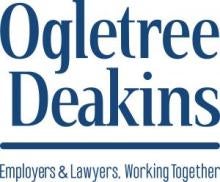On August 7, 2025, President Donald Trump released an executive order to attempt to permit alternative assets among 401(k) investment options. It marks a shift away from Biden-era guidance that discouraged alternative assets in 401(k)s.
Quick Hits
- President Trump’s executive order directs the DOL to revisit its guidance on alternative assets in 401(k) plans and coordinate with other regulators to expand investment options.
- If the DOL issues regulations, enforcement risk from the agency will likely decrease, but plan sponsors may face more participant lawsuits over investment risk, fees, or performance.
- To limit liability, plan sponsors may want to consider ensuring alternative assets qualify for ERISA § 404(c) protection and maintain strong due diligence, disclosures, and monitoring.
Background
Executive Order 14330 aims to expand 401(k) investment options by allowing access to alternative assets, such as private equity, real estate, and digital assets. The order directs the U.S. Department of Labor (DOL) to review its guidance on these investments, clarify fiduciary processes, and coordinate with the U.S. Securities and Exchange Commission (SEC) and the U.S. Department of Treasury to facilitate access. The order defines alternative assets as the following:
- “private market investments, including direct and indirect interests in equity, debt, or other financial instruments that are not traded on public exchanges, including those where the managers of such investments, if applicable, seek to take an active role in the management of such companies;
- direct and indirect interests in real estate, including debt instruments secured by direct or indirect interests in real estate;
- holdings in actively managed investment vehicles that are investing in digital assets;
- direct and indirect investments in commodities;
- direct and indirect interests in projects financing infrastructure development; and
- lifetime income investment strategies including longevity risk-sharing pools.”
In the past, most 401(k) plans have avoided alternative assets due to fiduciary concerns, regulatory risk, and fear of participant lawsuits. The executive order is a policy reversal from the Biden administration’s 2021 rescission of prior Trump-era guidance that briefly signaled comfort with limited private-equity exposure in 401(k)s.
Interestingly, the new executive order seems to limit cryptocurrency and bitcoin holdings to “actively managed investment vehicles that are investing in digital assets.” This can be interpreted to mean these assets must be held in a professionally managed fund of funds, and not individual purchases made by participants.
Avenues to Explore
Plan sponsors and fiduciaries might welcome DOL regulations under the Employee Retirement Income Security Act (ERISA) that could lessen concerns about agency enforcement risk when plans offer alternative asset investments, but they may still face participant claims, especially if investments are risky and plan participants are negatively affected by the higher fees associated with private equity funds. With the loss of Chevron deference, following agency regulations will not be a viable defense to a fiduciary breach claim.
ERISA regulations provide guidance to plan fiduciaries to ensure that participants have sufficient information to understand their investment options. Fiduciaries may also want to provide participants with information about investment options that can help them focus on their long-term investment horizon for returns as markets fluctuate. Offering alternative investments in a brokerage window within the plan may assist with long-term investment planning. An account balance threshold can be used to align with the SEC’s accredited investor standard. Liquidity and valuation requirements for plan assets, however, will be a challenge for fiduciaries and plan sponsors to navigate.
Section 404(c) of ERISA can provide liability protection for fiduciaries if participants or beneficiaries direct their own investments, but only when strict requirements for investment choice, disclosure, and control are met. This protection will be critical for plans considering alternative assets. Specifically, section 404(c) will allow fiduciaries to avoid liability “for any loss, or by reason of any breach, which results from such participant’s or beneficiary’s exercise of control,” of the plan investment. Fiduciaries will still be required to monitor the investments.
Next Steps for Plan Sponsors and Fiduciaries
President Trump’s executive order gave the DOL 180 days to reexamine the current guidance on 401(k) investments and to clarify the government’s position on alternative investing, including the appropriate fiduciary process to be used. In addition, the executive order directs the SEC to consider ways to “facilitate access to investments in alternative assets” for participants in defined contribution plans.
In the meantime, plan sponsors and fiduciaries may wish to evaluate whether forthcoming regulations or safe harbors expressly extend § 404(c) protection to alternative assets or impose supplemental conditions.





 />i
/>i

